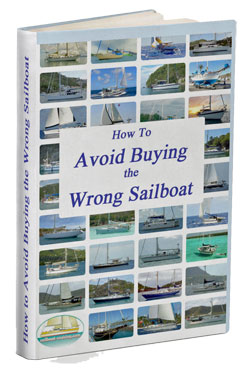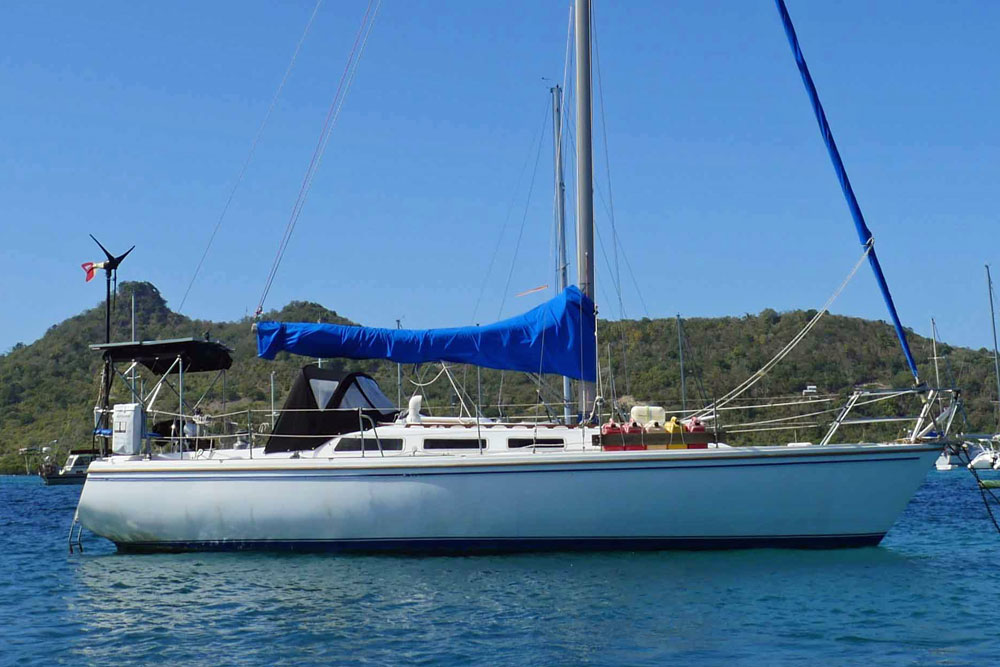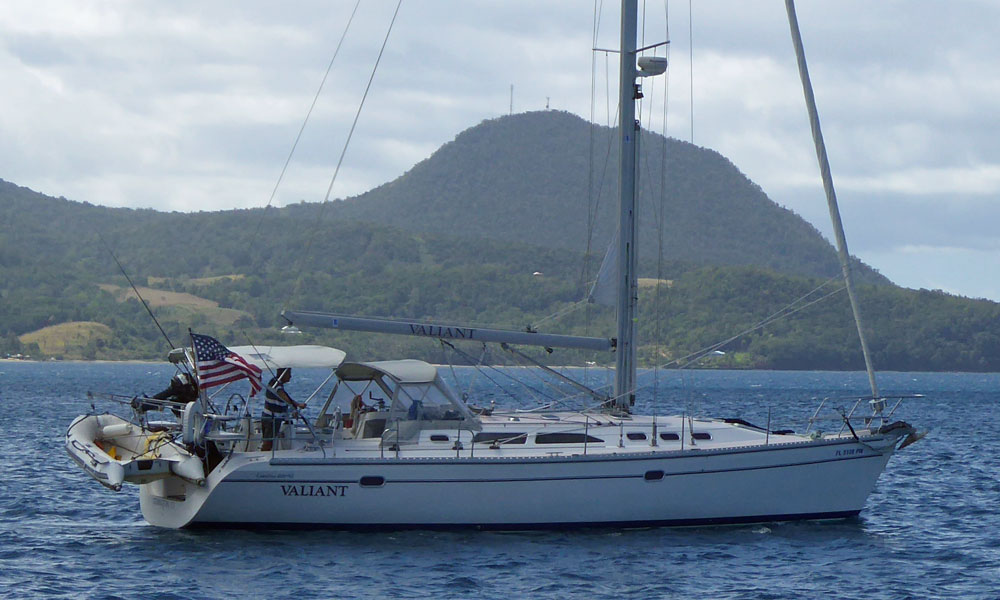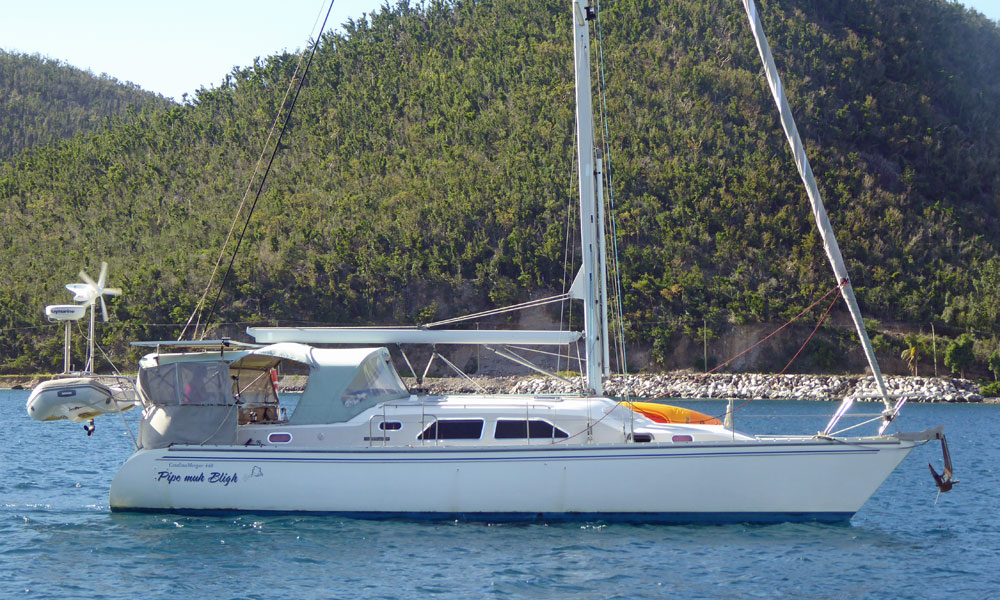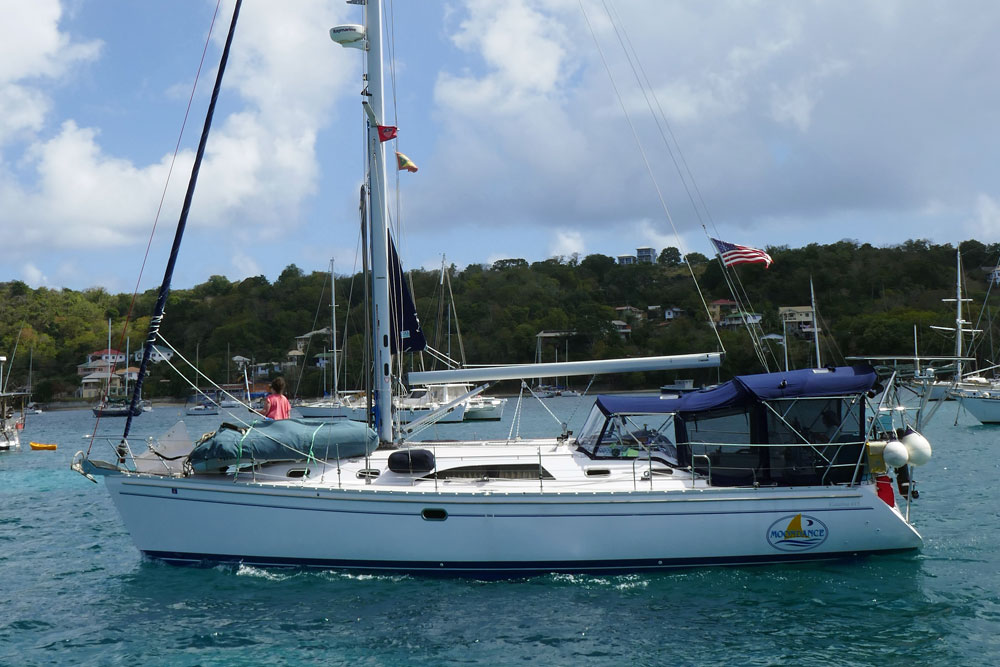- Home
- Cruising Yachts 40' to 45'
- Catalina 42
The Catalina 42 MkII Sailboat
Specs & Key Performance Indicators
The Catalina 42 was introduced in 1989 under the watch of Gerry Douglas, Catalina’s chief engineer since the 1970s.
The boat was development of an earlier racing hull designed by Nelson/Marek, with a new deck, coachroof, interior, and rig. The design followed in the footsteps of the designs for the 36 and 38-footers, which were very successful, then stretched this two feet to allow room for the swim platform. The Catalina 42 found more than 1,000 owners during her 22-year production run.
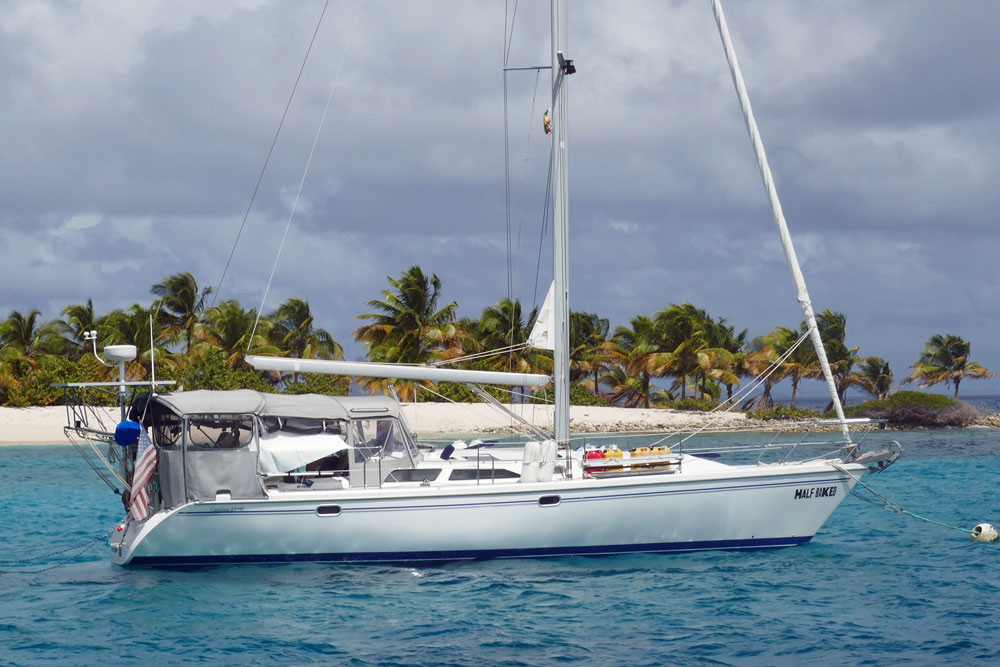 A Catalina 42 MkII
A Catalina 42 MkIIan alternative version, the Catalina 42 Mark II, was introduced in 1995. The Mark II featured a contemporary, rounded stern, modifications to the cockpit, extra cockpit stowage, a new rudder design, and the option of a two-stateroom layout.
Published Specification for the Catalina 42 MkII
Underwater Profile: Fin keel & spade rudder
Hull Material: GRP (Fibreglass)
Length Overall: 41'10" (2.8m)
Waterline Length: 36'0" (11.0m)
Beam: 13'10" (4.2m)
Draft: 6'8" (2.1m)*
Rig Type: Masthead sloop
Displacement: 20,500lb (9,299kg)
Designer: Gerry Douglas
Builder: Catalina Yachts (USA)
Year First Built: 1995
Number Built: 300
* A shallow draft wing keel version was also produced drawing 4'11" (1.5m).
Published Design Ratios for the Catalina 42 MkII
1. Sail Area/Displacement Ratio: 17.1
2. Ballast/Displacement Ratio: 40.5
3. Displacement/Length Ratio: 196
4. Comfort Ratio: 25.4
5. Capsize Screening Formula: 2.0
Summary Analysis of the Design Ratios for the Catalina 42 MkII
Based on the provided design ratios, the Catalina 42 sailboat would theoretically have the following sailing characteristics:
- Sail Area/Displacement Ratio (17.1): This ratio is within the range of 16 to 20, indicating reasonably good performance. The boat should have a good balance of power and weight, allowing it to sail efficiently in various conditions.
- Ballast/Displacement Ratio (40.5): This ratio is above 40, suggesting that the boat is stiff and powerful, able to stand up to the wind effectively. However this ratio doesn't account for the location of the ballast. A boat with its ballast in a shallow draft keel would be less stiff than the same boat with much of its ballast in a bulb at the foot of its keel.
- Displacement/Length Ratio (196): This ratio falls within the range of 200-275, indicating a moderate displacement. This suggests that the boat has a good balance between speed and stability, but it might require a larger sail area to reach its design hull speed.
- Comfort Ratio (25.4): This ratio falls within the range of 20 to 30, indicating a motion associated with a coastal cruiser. This suggests that the boat should provide a comfortable ride in most coastal cruising conditions. However, it might not fare as well in the more demanding conditions encountered in bluewater cruising.
- Capsize Screening Formula (2.0): This value is at the upper limit of suitability for ocean passages. While the boat might be capable of bluewater cruising, it would be less stable than boats with a lower capsize screening value.
It's important to note that these ratios are theoretical and based on certain assumptions. They provide a general idea of a boat's performance and comfort but may not fully reflect the actual sailing characteristics.
For example, the Ballast/Displacement Ratio doesn't consider the location of the ballast, which can significantly impact a boat's stiffness.
Similarly, Ted Brewer's Comfort Ratio favors heavy displacement, narrow-beamed vessels with long overhangs. Therefore, modern light-displacement, beamy cruisers with plumb bows might not score well on this ratio, even though they may have good bluewater capability.
Actual performance can also be influenced by factors such as hull shape, rigging design, and the skill of the crew. It's always recommended to test sail a boat to get a true sense of its characteristics.
This article was written with the assistance of Gemini, a large language model developed by Google. Gemini was used to gather information, summarize research findings, and provide suggestions for the content and structure of the article.
Other sailboats in the Catalina range include:
Recent Articles
-
Planning Your Sailboat Liveaboard Lifestyle: An Ocean Sailor's Guide
Dec 06, 25 05:18 AM
Seasoned sailors share their methodical risk analysis for planning a secure Sailboat Liveaboard Lifestyle, covering financial, property, and relationship risks. -
Marine Cabin Heaters: The Expert’s Guide to Comfort & Safety at Sea
Dec 05, 25 06:52 AM
Choose the best Marine Cabin Heaters for your vessel. Expert advice on diesel, paraffin, and hot water systems for year-round cruising comfort. -
Marine Water Heating Systems: Free Hot Water from Your Boat's Engine
Dec 03, 25 05:06 PM
Tap into your engine's heat to get free hot water on board. An experienced ocean sailor's guide to marine water heating systems, calorifiers & safety.
